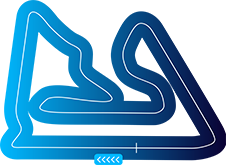2015 was undoubtedly the finest WEC season to date, the year it truly came of age. The closeness of competition throughout the classes underlined the true spirit of endurance racing and connected with fans, new and old, the world over.
Porsche won the World Championship comprehensively, with six victories including a superb 1-2 at Le Mans and the top step at the inaugural 6 Hours of Nürburgring on home soil. The German marque also claimed its first World GT Manufacturers’ crown after an incredibly close battle with Ferrari.
Mark Webber celebrated his ever first World Championship Drivers’ title, alongside Timo Bernhard and Brendon Hartley in the No.17 Porsche 919 Hybrid, despite a heart-stopping technical problem at the final round in Bahrain which threatened to turn upside down all the hard work from earlier in the season.
The first indication that 2015 was going to be a vintage WEC season came at Silverstone in April. A titanic battle for the lead between Audi and Porsche thrilled the crowd, both at home and for those tuning in to live coverage, swapping the lead lap after lap in an absorbing encounter that is sure to enter racing folklore. Audi eventually won, as they did two weeks later at Spa, and it looked as if it was heading towards another championship crown. Porsche had other ideas, however, and went on to take all before them, despite being pushed hard all the way by Audi. Toyota faced a long season in 2015. It was evident from the very first exchanges that it would not be in contention for victories, barring exceptional circumstances, and the Japanese manufacturer decided at an early stage to focus its efforts on an all-new car for 2016.
After an incredible three consecutive GT titles, Ferrari had to relinquish its status as champion to Porsche in 2015 but the fact that there was just four points between them showed just how competitive GT racing is today. Porsche Team Manthey’s Richard Lietz took the FIA World Endurance Cup for GT drivers after a fine season where he scooped wins in the No.91 911 RSR at Nürburgring, COTA and Shanghai. He and team mate Michael Christensen (who missed a race and therefore didn’t win the title with Lietz) were challenged right to the end of the season by Ferrari’s Bruni and Vilander.
Rebellion Racing took the LMP1 Privateers laurels with Nicolas Prost and Mathias Beche in the No.12 AER powered Rebellion R-One. But it was team mates Dominik Kraihamer, Alexander Imperatori and Daniel Abt who claimed victory at Le Mans in the sister car.
If the action in LMP1 saw some of the closest and most spectacular racing for many years, the LMP2 category was equally gripping in 2015. The largest entry since 2012 lined up for the season tone and soon it became evident that the title battle was going to be a straight fight between the G-Drive Racing and KCMG squads. Sam Bird was the stand-out performer in 2015, and along with team mates Roman Rusinov and Julien Canal, took the title aboard the No.26 Ligier JP P2-Nissan with wins at Silverstone, COTA, Fuji and Bahrain.
The LMGTE Am division had a distinctive Russian flavour in 2015 as the SMP Racing squad celebrated with both teams and drivers trophies. Andrea Bertolini spearheaded wins, along with Russian team mates Aleksey Basov and Victor Shaytar in the No.72 Ferrari 458 Italia at Le Mans, Nürburgring and COTA. The trio took the titles at the final round, but were seldom under threat from rivals after their mid-season trio of wins.
As well as the incredible technical achievements of the LMP1 machines, their relevance to the automotive world and identity with future engineering technologies, the WEC also showcased that regulation consistency breeds a sporting spectacle second to none. It is undoubtedly because of this that the WEC welcomes a new manufacturer in 2016 – Ford – and also expands to a ninth race in Mexico City.


















